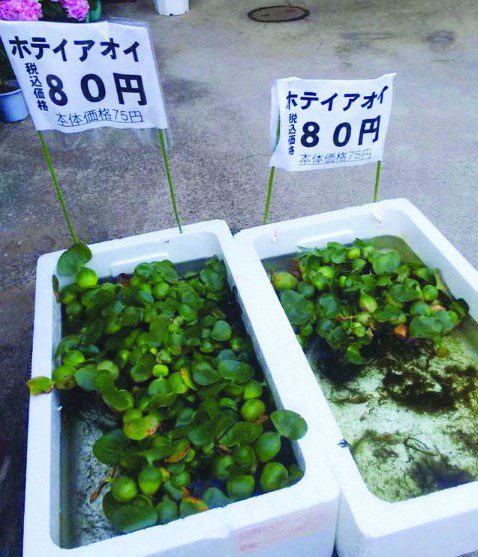Wild vegetables such as Sam, Tam Bop, Thai Lai, Wild Gotu Kola, MoP, and BeP leaves are being studied, propagated, and developed for large-scale cultivation by scientists. Once a simple bowl of mixed vegetable soup from a distant past, these greens have transformed from a humble household dish into a specialty. The journey to preserve these vegetables, which have nourished generations of Vietnamese people, has been ongoing for decades.
Preserving Grandma’s and Mom’s Soup
The global trend of searching for, preserving, and reviving wild plant species has quietly begun in many countries. In Vietnam, over the past decade, scientists have raised awareness about “keeping the pot of soup from grandma and mom” by researching and propagating various vegetables that were popular during times of hardship.
Examples include the preservation and development model of the Sắng vegetable at Xuân Sơn National Park (Phú Thọ), the bitter earth plant model from the Information and Application Center for Science and Technology in Hau Giang province, and the large-scale cultivation of BeP leaves, ground squash (Lui vegetables), Lỗ bình, and bitter eggplant by the Lam Dong Department of Science and Technology.

Rau nhót is now a new specialty of Nghệ An.
Interestingly, in the process of searching for plant varieties, studying, and preserving them, scientists also uncover many cultural and knowledge values associated with these traditional vegetables. For instance, researchers at the Biology Department of Da Lat University discovered a treasure trove of wild vegetables and knowledge about them within the indigenous communities of Lam Dong that had never been widely shared.
In another instance, while investigating the fermentation effects of various plants and herbs, the research team from the University of Agriculture and Forestry in Thai Nguyen found that many ethnic minority communities possessed traditional knowledge about the diverse use of plants for brewing, which holds significant scientific and practical value but has never been documented for long-term preservation.

Water hyacinth is sold for 80 yen per plant in Japan.
A positive signal is that beyond scientific research efforts, many farmers have recognized the practical benefits of wild vegetables and have begun to propagate and expand their cultivation. For example, some households in Tra Long Ward, Long My, Hau Giang, originally accustomed to foraging for wild vegetables to sell, noticed a significant demand for “nostalgic vegetables” among customers, prompting them to cultivate these vegetables in their gardens. Varieties such as blood beef, cloud mustard, jade beads, and bitter earth, domesticated by locals, have created a source of mixed wild vegetables for the surrounding communities. This group of farmers is currently being encouraged by the Information and Application Center for Science and Technology in Hau Giang province to participate in the propagation and preservation of certain wild vegetables proven to have high nutritional and medicinal values.
Another example is Trần Văn Quân from Hoàng Mai, Nghệ An. With self-taught knowledge, Quân successfully experimented with and cultivated Rau Nhót on a large scale. This plant, which grows wild along brackish rivers and shrimp ponds, has a salty yet tangy flavor. Rau Nhót has now been successfully intensively cultivated, becoming a high-end vegetable and a new specialty of Nghệ An, catering not only to the local market but also expanding sales to various other provinces and cities.
The Gifts of the Land

Sam salad in a Michelin restaurant in the USA.
How to propagate, develop, and bring these native wild vegetables to market to meet consumer demand while preserving many rare vegetable varieties is a concern for many scientists. The trend of celebrating slow food (in contrast to fast food, promoting local produce and traditional cooking methods) is becoming essential in many countries. Vietnam is, of course, no exception.
Fortunately, thanks to scattered research projects, many vegetables that were once thought to be lost have begun to re-emerge vibrantly, transitioning from the humble meals of the poor to the luxurious tables of restaurants, opening up a new trend in production and business.
Notably, among many wild vegetables that grow freely in fields and marshes, some varieties possess not only high nutritional value but also unique medicinal properties. For instance, the red Sam that grows wild in our country is considered a “longevity medicine” in traditional Chinese medicine. The Tam Bop fruit, which children like to pick and pretend to use as firecrackers, has become a valuable fruit upon export, fetching prices ranging from several hundred to even a million VND per kilogram. Even the water hyacinth, commonly referred to as Lục Bình in southern Vietnam, which grows freely in flooded fields, is sold for hundreds of yen per small branch in Japan.
The rapid consumption rate of cultivated wild vegetables indicates a significant demand among the public for wild plants as food. Many restaurants have included wild vegetables such as BeP leaves, ground squash (Lui vegetables), Lỗ bình, bitter eggplant, Rau Nhót, Sau Sau, and jade beads in their menus. It’s also important to acknowledge the promotional efforts of the tourism community and food forums worldwide. Thanks to this robust network, the appearance of the most unique and rare dishes can spread rapidly, reaching a broad audience.
An advantage in preserving natural vegetable varieties is their remarkable resilience and resistance, making their care relatively straightforward and usually not requiring the use of pesticides. This is seen as “scratching the right itch” at a time when consumer sentiment is increasingly cautious about short-term crops and genetically modified vegetables that are heavily treated with pesticides and growth hormones.
We often say that the agricultural plant gene pool is a valuable national heritage that must be preserved and used effectively for the sustainable development goals of the country, as it is the only essential source of biological material for agricultural and forestry production, environmental protection, biotechnology research, and the raw material production for herbal medicine, biofuels, and many other scientific fields.
In reality, our plant gene fund is currently experiencing serious erosion. It is estimated that over 80% of local plant varieties are no longer in production, and the number of plant species threatened with extinction continues to rise. Meanwhile, the demand for exploiting and utilizing the agricultural plant gene pool to stabilize crop yields, ensure food security, enhance the competitiveness of agricultural products, and promote sustainable economic and social development is increasing.
Searching for and preserving wild vegetables and wild plants is considered one of the most direct paths toward establishing an organic agriculture system and sustainable farming practices. This also seems to be the only way to counter the risks associated with monoculture systems and dependence on genetically modified varieties.


















































